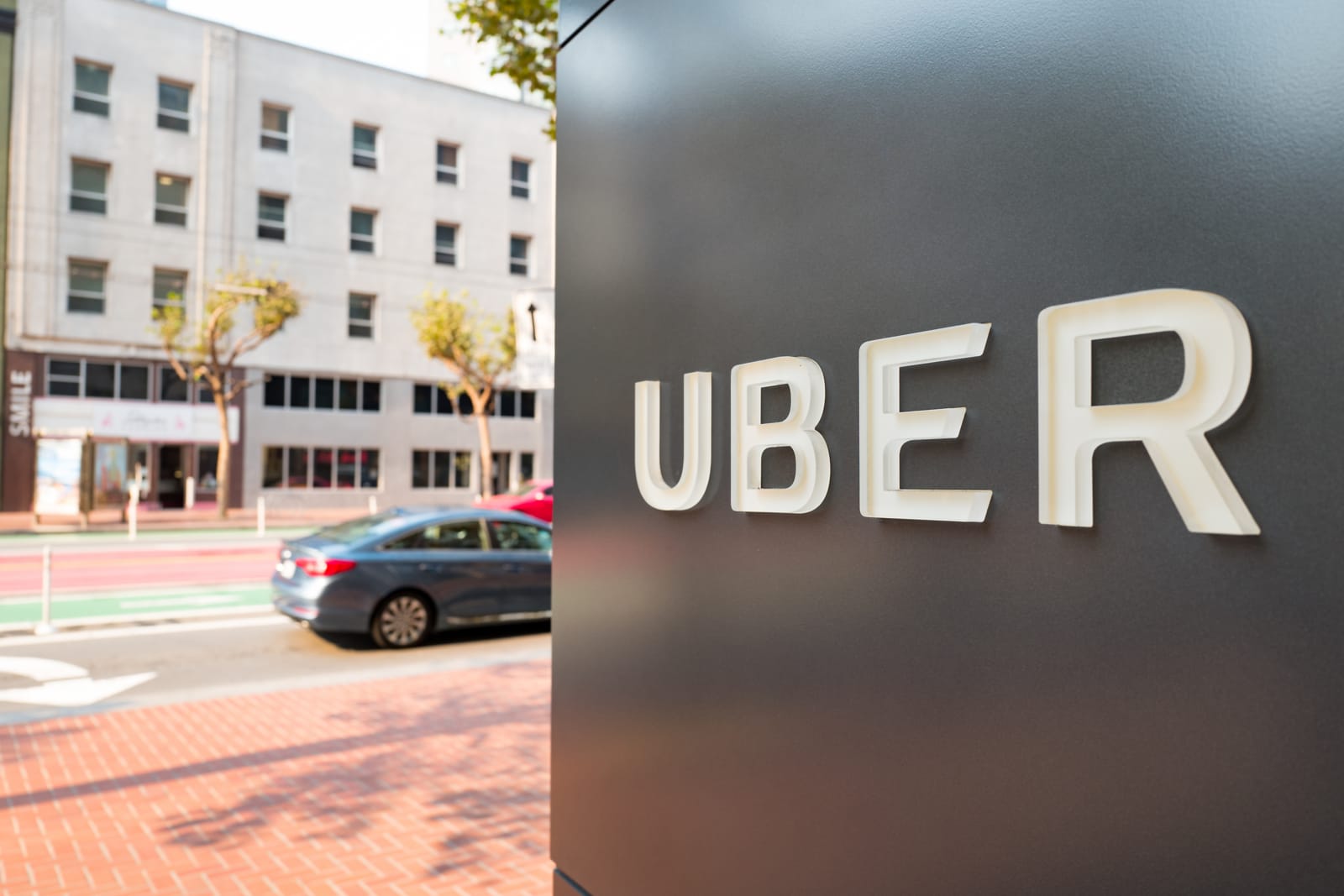 Mini really wants everyone to know that it’s embracing the EV future. At an event ahead of the New York Auto Show, the automaker unveiled the Classic Mini Electric that’s exactly what the name implies: an older Mini that’s been electrified.
Mini really wants everyone to know that it’s embracing the EV future. At an event ahead of the New York Auto Show, the automaker unveiled the Classic Mini Electric that’s exactly what the name implies: an older Mini that’s been electrified.
The pundits have it wrong.
Congresswoman To Ryan: Make Farenthold Repay His $84,000 Harassment Settlement
Posted in: Today's ChiliHold the Texas Republican accountable to “the high standards our office demands,” says Rep. Jackie Speier.
Uber Halts Self-Driving Car Tests In Calif., Where It Didn’t Test Much Anyway
Posted in: Today's ChiliThe consequences of a fatal crash in Arizona continue.
Inquiry finds FBI sued Apple to unlock phone without considering all options
Posted in: Today's ChiliThe Office of the Inspector General has issued its report on the circumstances surrounding the FBI’s 2016 lawsuit attempting to force Apple to unlock an iPhone as part of a criminal investigation. While it stops short of saying the FBI was untruthful in its justification of going to court, the report is unsparing of the bureaucracy and clashing political motives that ultimately undermined that justification.
The official narrative, briefly summarized, is that the FBI wanted to get into a locked iPhone allegedly used in the San Bernardino attack in late 2015. Then-director Comey explained on February 9 that the Bureau did not have the capability to unlock the phone, and that as Apple was refusing to help voluntarily, a lawsuit would be filed compelling it to assist.
But then, a month later, a miracle occurred: a third-party had come forward with a working method to unlock the phone and the lawsuit would not be necessary after all.
Though this mooted the court proceedings, which were dropped, it only delayed the inevitable and escalating battle between tech and law enforcement — specifically the “going dark” problem of pervasive encryption. Privacy advocates saw the suit as a transparent (but abortive) attempt to set a precedent greatly expanding the extent to which tech companies would be required to help law enforcement. Apple of course fought tooth and nail.
In 2016 the OIG was contacted by Amy Hess, a former FBI Executive Assistant Director, who basically said that the process wasn’t nearly so clean as the Bureau made it out to be. In the course of its inquiries the Inspector General did find that to be the case, though although the FBI’s claims were not technically inaccurate or misleading, they also proved simply to be incorrect — and it is implied that they may have been allowed to be incorrect in order to further the “going dark” narrative.
The full report is quite readable (if you can mentally juggle the numerous acronyms), but the findings are essentially as follows.
Although Comey stated on February 9 that the FBI did not have the capability to unlock the phone and would seek legal remedy, the inquiry found that the Bureau had not exhausted all the avenues available to it, including some rather obvious ones.

Comey at a hearing in 2017
For instance, one senior engineer was tasked with asking trusted vendors if they had anything that could help — two days after Comey already said the FBI had no options left. Not only that, but there was official friction over whether classified tools generally reserved for national security purposes should be considered for this lesser, though obviously serious, criminal case.
In the first case, it turned out that yes, a vendor did have a solution “90 percent” done, and was happy to finish it up over the next month. How could the director have said that the FBI didn’t have the resources to do this, when it had not even asked its usual outside sources for help?
In the second, it’s still unclear whether there in fact exist classified tools that could have been brought to bear on the device in question. Testimony is conflicting on this point, with some officials saying that there was a “line in the sand” drawn between classified and unclassified tools, and another saying it was just a matter of preference. Regardless, those involved were less than forthcoming even within the Bureau, and even internal leadership was left wondering if there were solutions they hadn’t considered.
Hess, who brought the initial complaint to the OIG, was primarily concerned not that there was confusion in the ranks — it’s a huge organization and communication can be difficult — but that the search for a solution was deliberately allowed to fail in order that the case could act as a precedent advantageous to the FBI and other law enforcement agencies. Comey was known to be very concerned with the “going dark” issue and would likely have pursued such a case with vigor.
So the court case, Hess implied, was the real goal, and the meetings early in 2016 were formalities, nothing more than a paper trail to back up Comey’s statements. When a solution was actually found, because an engineer had taken initiative to ask around, officials hoping for a win in court were dismayed:
She became concerned that the CEAU Chief did not seem to want to find a technical solution, and that perhaps he knew of a solution but remained silent in order to pursue his own agenda of obtaining a favorable court ruling against Apple. According to EAD Hess, the problem with the Farook iPhone encryption was the “poster child” case for the Going Dark challenge.
The CEAU Chief told the OIG that, after the outside vendor came forward, he became frustrated that the case against Apple could no longer go forward, and he vented his frustration to the ROU Chief. He acknowledged that during this conversation between the two, he expressed disappointment that the ROU Chief had engaged an outside vendor to assist with the Farook iPhone, asking the ROU Chief, “Why did you do that for?”
While this doesn’t really imply a pattern of deception, it does suggest a willingness and ability on the part of FBI leadership to manipulate the situation to its advantage. A judge saying the likes of Apple must do everything possible to unlock an iPhone, and all forward ramifications of that, would be a tremendous coup for the Bureau and a major blow to user privacy.
The OIG ultimately recommends that the FBI “improve communication and coordination” so that this type of thing doesn’t happen (and it is reportedly doing so). Ironically, if the FBI had communicated to itself a bit better, the court case likely would have continued under pretenses that only its own leadership would know were false.
Considering we’ve got simulators for everything from driving a junker (x2) to moving into a neighborhood with a bunch of hot dads in it, I suppose it was only a matter of time until someone made a game where you assemble your own PC. It’s called PC Building Simulator, as you might guess, and it looks fabulous.
I’ve built all my PCs over the years, including my current one, which I really should have waited on, since the early Skylake mobos were apparently trash. I’m sure we can line up the screw holes better than that, MSI!
What was I talking about? Oh yes, the simulator. This is no joke game: it uses real, licensed parts from major manufacturers, which are (or will be) simulated down to their power draws, pins, draw counts and so on. So if you pick a power supply without enough molex connectors to handle your SLI rig and PCIe solid state system drive (or whatever), it won’t start. Or if you try to close the ultra-slim case with an 8-inch-tall heatsink on your overclocked CPU, it’ll just clank. (Some of these features are still in development.)
Add LEDs inside the case, replace the side panel with acrylic (no!), try out a few cooling solutions… the possibilities are endless. Especially since manufacturers like Corsair, AMD, and so on seem hot to add perfectly modeled virtual versions of their components to the selection.
There’s even a “game” aspect where you can start your own PC repair business — someone sends you a machine that won’t boot, or shuts down randomly, and you get to figure out why that is. Run a virus scan, reseat the RAM, all that. Damn, this sounds just like my actual life.
Seriously though, this is great — it might help more people get over the idea that building a PC is difficult. I mean, it is, but at least here you can go through the motions so it isn’t a total mystery when you give it a shot.
The best part is that this game is made by a teenager who put together the original as a lark (it’s free on itch.io) and attracted so much attention that it’s been blown up into a full-blown game. Well, an Early Access title, anyway.
 Volkswagen has a new, 5-seat SUV in the works, and it’s previewing just what that will look like in 2019 with the Atlas Cross Sport Concept. Making its debut at the North America International Auto Show 2018, the concept car is a hybrid what-if that teases just what the production Atlas 5-seater might offer when it goes on sale next … Continue reading
Volkswagen has a new, 5-seat SUV in the works, and it’s previewing just what that will look like in 2019 with the Atlas Cross Sport Concept. Making its debut at the North America International Auto Show 2018, the concept car is a hybrid what-if that teases just what the production Atlas 5-seater might offer when it goes on sale next … Continue reading![]()
 Marshall has launched a new pair of Bluetooth headphones, the Mid ANC. Unlike its previous models, the Mid ANC sports active noise cancelation, a first for the company. Despite that feature, the Mid ANC still manages to offer excellent battery life alongside the promise of “superior wireless audio.” As with the company’s other headphones and audio products, the Mid ANC … Continue reading
Marshall has launched a new pair of Bluetooth headphones, the Mid ANC. Unlike its previous models, the Mid ANC sports active noise cancelation, a first for the company. Despite that feature, the Mid ANC still manages to offer excellent battery life alongside the promise of “superior wireless audio.” As with the company’s other headphones and audio products, the Mid ANC … Continue reading![]()
 After roughly a year of partnership, AT&T’s LTE-based FirstNet public safety network is starting to come alive — the carrier has launched the service’s network core nationwide. The rollout provides the foundation for a communications network de…
After roughly a year of partnership, AT&T’s LTE-based FirstNet public safety network is starting to come alive — the carrier has launched the service’s network core nationwide. The rollout provides the foundation for a communications network de…






